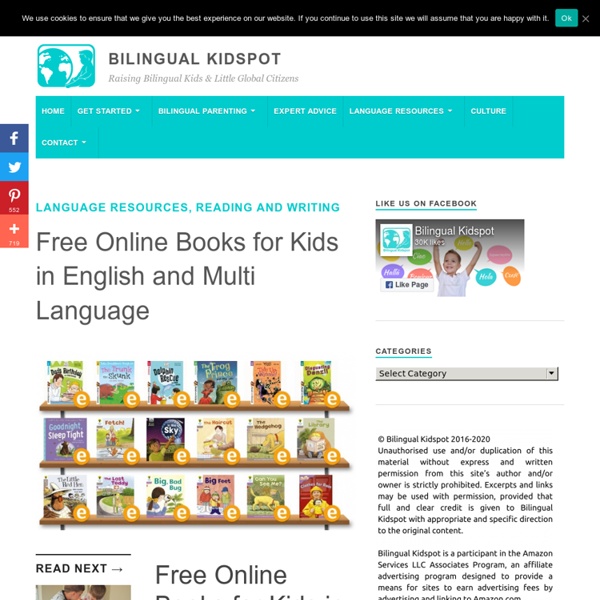FREE Resources for Working with Russian Speaking Clients: Part II
Earn 10 Reward Points by commenting the blog post A few years ago I wrote a blog post entitled “Working with Russian-speaking clients: implications for speech-language assessment” the aim of which was to provide some suggestions regarding assessment of bilingual Russian-American birth-school age population in order to assist SLPs with determining whether the assessed child presents with a language difference, insufficient language exposure, or a true language disorder. Today I wanted to provide Russian speaking clinicians with a few FREE resources pertaining to the typical speech and language development of Russian speaking children 0-7 years of age. It is, however, important to note that due to the absence of research and standardized studies on this subject much of the below information still needs to be interpreted with significant caution. Select Speech and Language Norms: Select Parent Questionnaires (McArthur Bates Adapted in Russian):
5 Free Video Games That Support ELLs
The concept of gamifying learning has been part of practical instruction, in various forms, for years, and for good reason: Research shows that game-based learning has the capacity to motivate students, activate knowledge, and enhance critical thinking capacities. This is just as true for English language learners (ELLs) as for native English speakers. Serious simulation games—which I have described as being “designed for the fundamental purposes of education for reaching a solution for real-world dilemmas”—can be especially effective in engaging middle- and upper-grade ELLs in rigorous content application. By inviting players to actively solve relevant problems, these games work to expand the ways in which learners see and interact with the world around them. For ELLs in particular, serious simulation games present an opportunity to demonstrate both existing funds of knowledge and fresh academic learning in ways that reduce the demand for expressive language.
Internet Acronyms: 26 Popular Email and Internet Acronyms You Need to Know - Lessons and Worksheets for ESL Teachers and English Students
Learn Internet Acronyms in English. Here is a list of common Email and Internet Acronyms that will be helpful when using the Internet. Internet Acronyms in English
Difference or Disorder? Understanding Speech and Language Patterns in Culturally and Linguistically Diverse Students - Bilinguistics
Determining whether a student’s speech and language errors result from influences from their native language or whether they are indicative of speech or language impairment is a challenge many educators face. One in every five children in the United States comes from a home in which English is not the primary language. In this book, we compare and contrast English with 12 other languages and African-American English. The information is laid out in charts and diagrams to facilitate the decision-making process about student needs.
NASA Climate Kids
energySearch What Can Trees Tell Us About Climate Change? How Do We Know the Climate Is Changing? What Is Climate Change?
Fingerprint Alphabet Art
If you need a way to keep the little fingers busy and learning at the same time give this fingerprint alphabet art a try! Learning the alphabet can be tough so fun approaches are always welcome wouldn’t you agree? This post contains affiliate links. There’s a fingerprint creation for every letter and some letters even allow for more creativity – all you have to do is dip those little cuties in finger paint or fingerprint ink pad press them down on a sheet of paper (or a few times in some cases) and do some doodling with a black (and other) marker to give the little characters life! Fingerprint Alphabet Art So we’ve got
LD Identification Toolkit Considerations for ELL
Recent articles (e.g., Scott, Hauerwas, & Brown, 2014) have summarized research and state regulatory provisions and guidance pertaining to the use of Response to Intervention (RtI) for the identification of students with specific learning disability (SLD) who are culturally and linguistically diverse (CLD) and who may additionally be English language learners (ELLs).1 The process for determining whether students’ difficulties are due to the normal process of English language acquisition or limited opportunity for acculturative knowledge acquisition rather than a disability is neither well understood nor applied by school personnel, and students acquiring English often display similar characteristics to students with an SLD (Collier, 2011). Information in the following five areas provides guidance for the instruction of students who are CLD and for making valid decisions for determining special education eligibility. Expertise/Knowledge of Team and Informed Parent Participation
teachthought
50 Ways Google Can Help You Become A Better Teacher by TeachThought Staff While Apple products are known for their integration in classrooms, increasingly Google is the choice for schools and districts looking for something organized, useful, and inexpensive that’s available on tablet, laptop, Chromebooks, desktop, smartphone, and more. In fact, the sheer diversity of Google products might make them a more natural fit in the classroom in lieu of the iPad’s gravity.
Tips – Digital presentation tools
Help learners gain confidence with speaking Learners can be reluctant to speak aloud. Using an avatar and voice-recording tools could encourage them to be more productive. With the free creator version of Voki learners can create up to three characters with a maximum of 60 seconds of recorded audio for each character. With Tellagami learners can create animated messages using their recorded voice and add text. Being able to re-record themselves helps make sure learners are happy with their work before they share it with the rest of the class.
Phonemic Inventories Across Languages
Languages across the world have unique phonemic systems. For individuals learning English as a second language, it is common for the phonemic system of their first language to influence the production of sounds in English. Please remember that dialectal differences exist for each language and should be considered when using the phonemic charts. The Speech Accent Archive has a number of phonemic inventories available. Phonemic Inventories ASHA has compiled resources on the phonemic systems for the following languages:



